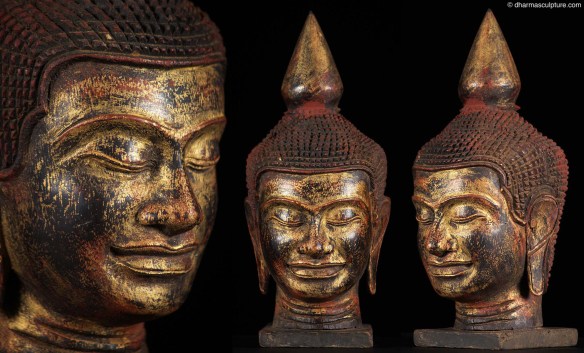
This beautiful hand made incense burner and incense storage box is decorated with the eight auspicious symbols (Ashtamangala in Sanskrit). They are a group of Buddhist symbols that appear on many Buddhist textiles, objects and paintings. Each symbol represents an aspect of Buddhist teaching and when they appear together, their powers are multiplied.
The Parasol (Chhatra) symbolizes the wholesome activity of preserving beings from illness, harmful forces, obstacles and so forth in this life and all kinds of temporary and enduring sufferings of the three lower realms, and the realms of men and gods in future lives. It also represents the enjoyment of a feast of benefit from under its cool shade.
The Golden Fish (Matsya) symbolizes the auspiciousness of all living beings in a state of fearlessness, without danger of drowning in the ocean of sufferings, and migrating from place to place freely and spontaneously, just as fish swim freely without fear through water.
The Treasure Vase (Kalasa) symbolizes an endless rain of long life, wealth and prosperity and all the benefits of this world and liberation
The Lotus Flower (Padma) symbolizes the complete purification of the defilements of the body, speech and mind, and the full blossoming of wholesome deeds in blissful liberation.
The Conch Shell (Sankha) which coils to the right symbolizes the deep, far-reaching and melodious sound of the Dharma teachings, which being appropriate to different natures, predispositions and aspirations of disciples, awakens them from the deep slumber of ignorance and urges them to accomplish their own and others’ welfare.
The Endless Knot (Shrivasta) symbolizes the mutual dependence of religious doctrine and secular affairs. Similarly, it represents the union of wisdom and method, the inseparability of emptiness and dependent arising at the time of path, and finally, at the time of enlightenment, the complete union of wisdom and great compassion.
The Victory Banner (Dhwoja) symbolizes the victory of the activities of one’s own and others body, speech and mind over obstacles and negativity. It also stands for the complete victory of the Buddhist Doctrine over all harmful and pernicious forces.
The Wheel of the Dharma (Dharmachakra) symbolizes the auspiciousness of the turning of the precious wheel of Buddha’s doctrine, both in its teachings and realizations, in all realms and at all times, enabling beings to experience the joy of good deeds and liberation.
CLICK HERE TO VIEW NEW ARRIVALS IN DHARMA SCULPTURE’S GALLERY
Like this:
Like Loading...










